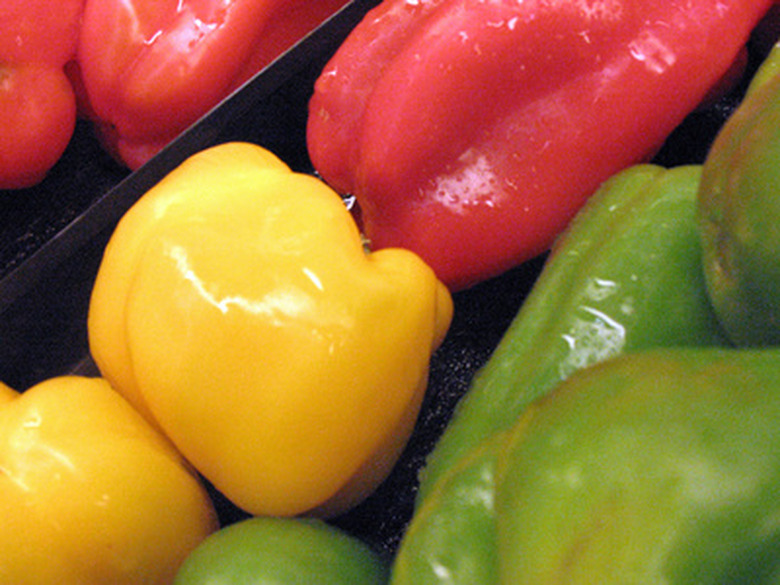The Life Cycle Of The Pepper Plant
Great for warm, sunny locations in the vegetable garden, pepper plants (Capsicum annuum) are short-lived tropical perennials that are usually grown as annual (one growing season) plants. They are killed by frost, but where frosts do not occur, the pepper will continue to grow for two or even three years, continuing to flower and produce fruits filled with seeds. Generally, the seeds that drop to the ground sprout and readily overgrow and replace the older plants, perpetuating the pepper plant.
Seed Germination
Pepper plant seeds readily germinate in moist soil that is warm (at least 70 degrees Fahrenheit). Colder, drier soils retard or prevent the seed from sprouting altogether. Seedlings that are exposed to cold, drought or overly wet conditions can succumb to fungal rot or wilt.
Growth
As long as temperatures remain above 70 degrees and soil is fertile and moist and sunlight is abundant, a young pepper plant will grow unabated. With longer days in summer, increased ambient humidity and temperatures above 75 degrees increase the rate of stem elongation and unfurling of new leaves. According to research published in the Oxford Journal Annals of Botany, these conditions promote many leaves that are small compared to leaves grown in the cooler, shorter days of spring. Deep green foliage converts energy from the sun into carbohydrates to strengthen the plant and prepare it for flowering.
- Great for warm, sunny locations in the vegetable garden, pepper plants (Capsicum annuum) are short-lived tropical perennials that are usually grown as annual (one growing season) plants.
Flowering
At the stem branch tips, small singular white or yellow flowers appear that are star- or bell-shaped in summer when humidity and heat are high. Sometimes the blossoms appear in clusters of two or three at the base of leaf petiole stems. Insects facilitate pollination, which allows for formation of the pepper fruit. Flowers are continually produced as the stems grow , although flowering wanes when temperatures drop below 70 degrees during the day. If nighttime temperatures drop below 55 degrees, flowers drop from the plant.
Development and Maturation
Pollinated flowers' ovaries expand and ripen the seeds inside. The fruits at first are green and small, and, depending on the type of pepper, gradually enlarge and become more fleshy and juicy. They often become rounded and elongated and any shade of red, orange, yellow, purple or green when they mature. A ripened fruit lingers on the mother plant until the tissue in the stem holding the fruit collapses, dropping the fruit to the ground. Eventually the fruit itself rots and exposes its many seeds to the soil. As with flowering, the development of fruit continues as long as growing conditions are favorable.
- At the stem branch tips, small singular white or yellow flowers appear that are star- or bell-shaped in summer when humidity and heat are high.
- As with flowering, the development of fruit continues as long as growing conditions are favorable.
Plant Death
In autumn or winter, the shorter days and cooler temperatures slow the plant growth on pepper plants. Cool nighttime temperatures, dry air or dry soil can cause flowers, fruits and leaves to stop growing. A frost will kill the pepper plant, and subfreezing temperatures will kill underground roots thoroughly. Even if the plant survives for a few years in a frost-free environment, the plant will slowly degrade after fruits mature and seeds ripen. These plants are genetically predisposed to grow and yield seeds before dying. Plucking off flowers and fruits will prolong the plant's life as it continues to grow merely to make seeds and ensure the species endures to grow in a subsequent generation.
References
- University of Illinois Extension: Peppers
- "A-Z Encyclopedia of Garden Plants"; Christopher Brickell and H. Marc Cathey, eds.; 2004
